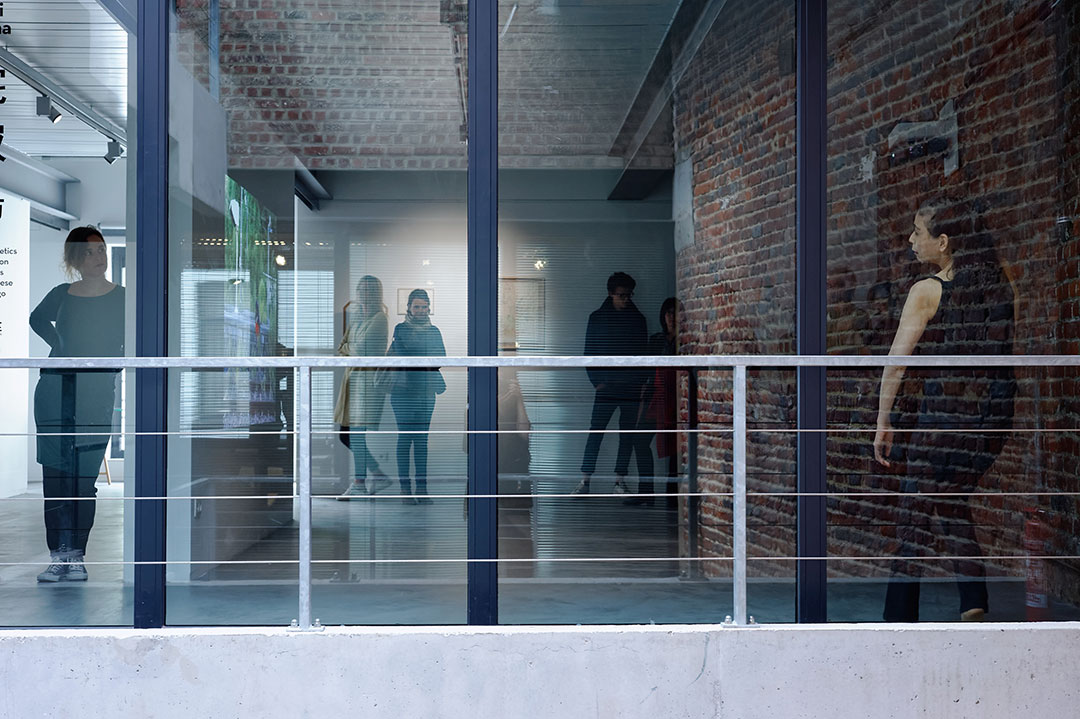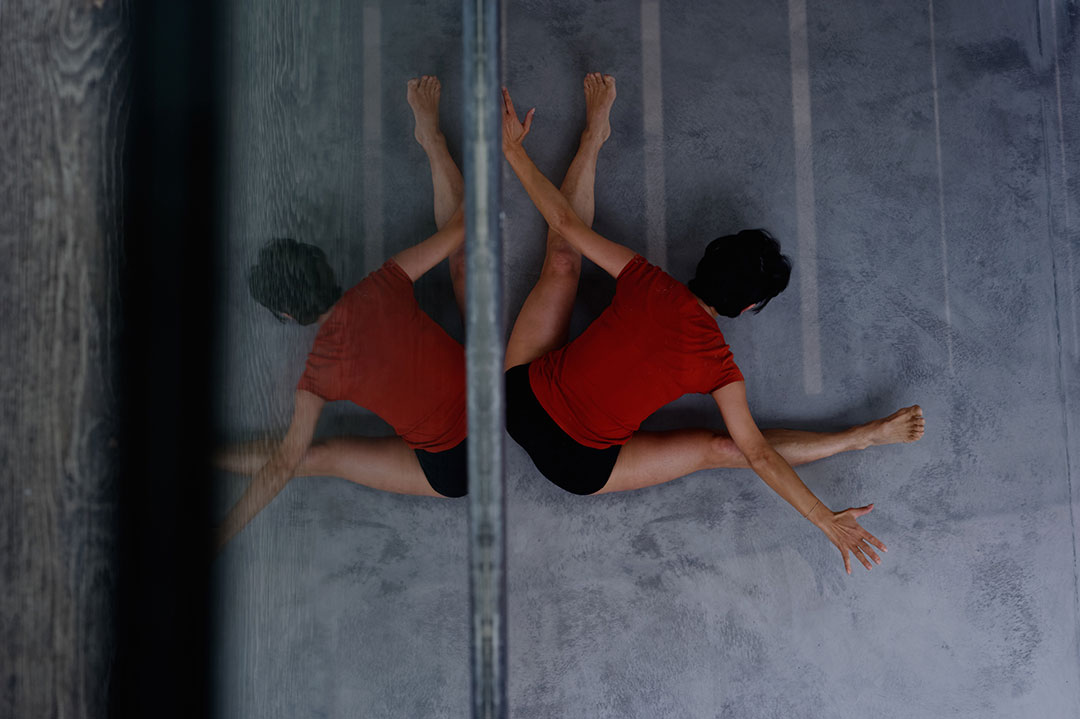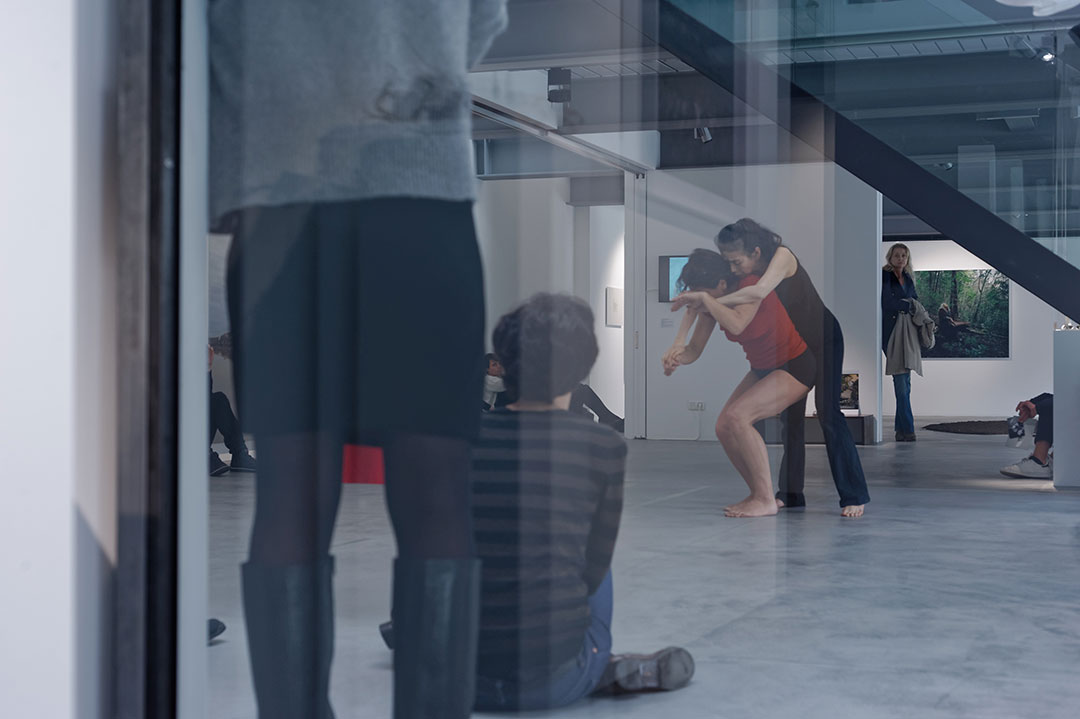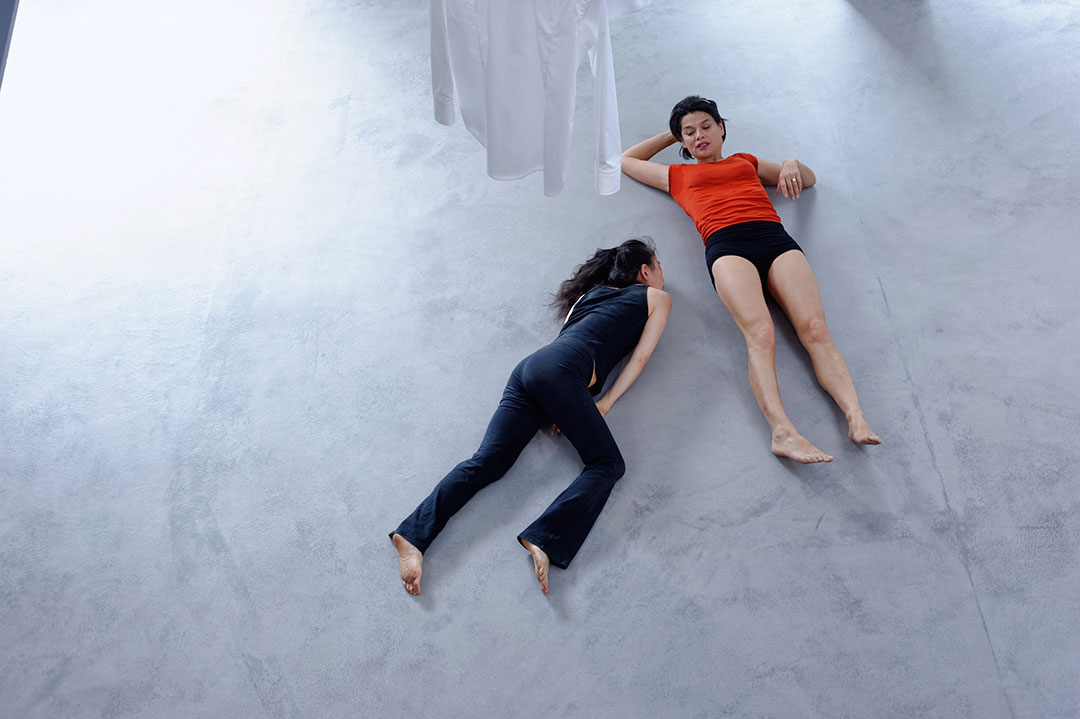Dialogue Eiko Otake - Emmanuelle Huynh, 2016
Dialogue au long cours entre Emmanuelle Huynh et Eiko Otake / Performances
En février 2013, je commence à faire le portrait de la ville de New-York à travers le rapport que certains de ses habitants entretiennent avec l'architecture de leur ville.
Je rencontre Eiko Otake, femme japonaise, danseuse et chorégraphe. Elle a émigré, vit et travaille à New York depuis 40 ans.
J'arrive vers elle avec deux questions :
"Comment votre corps, votre imagination et votre esprit, élevés dans la culture japonaise, ont t'ils incorporé l'espace de cette ville, de ce pays ?
Qu'avez vous quitté en quittant le Japon ?"
Surprise, elle répond par de nouvelles questions qui témoignent de sa curiosité en retour à mon endroit.
Depuis, nous alternons temps de travail en studio, longues discussions,invitations réciproques à assister au travail en répétition ou en public.
Eiko a choisi d'émigrer vers le pays occupant, d'être une étrangère et d'enseigner « exquisité movement » dans les universités américaines ainsi que des cours interdisciplinaires sur les bombardements atomiques et la violence de masse.
Je suis à moitié asiatique moi-même, issue d'un père vietnamien qui a émigré en France alors que le Vietnam préparait Dien Bien Phu et son indépendance.
J'enseigne la danse contemporaine et sa pensée dans une école d'architecture et ai dirigé une école nationale supérieure de danse où la question principale fut celle de l'émancipation par rapport à tout cadre, et où les artistes butoh vivant au Japon sont venus y enseigner très intensivement, redonnant une visibilité actualisée de ces artistes découverts et reconnus en France dans les années 80.
Eiko opère depuis 40 ans avec le danseur et chorégraphe japonais Koma au sein de "Eiko and Koma".
En 2014, elle a commencé un cycle de travail solitaire exceptionnel "Bodies in places" où elle confronte son corps à des espaces puissants, comme la salle d'attente nord de la gare de Philadelphie, Fukushima... C'est aussi la première fois qu'elle danse seule.
Je danse depuis 30 ans, dans les pièces des autres, dans les miennes et j'alterne les formats, du solo, duo, à la pièce de groupe (comme « Tôzai!... », pièce créée en 2014, pour 6 danseurs et un rideau monumental), dans les théâtres, les jardins, les musées…
L'invitation de Thalie Art Foundation revêt pour nous un caractère exceptionnel et inaugural : elle met en scène notre première rencontre publique et va produire une sorte de précipité de nos questions actuelles : qu'enseignons nous, que dansons nous, de quoi faisons nous le deuil en dansant ?
Au milieu de l'accrochage des œuvres réunies par Nathalie Guiot et Philippe Terrier-Hermann, dans le très bel Espace Hangar H18, à l'issue d'une résidence dans le lieu et la ville, nous continuerons nos pas l'une vers l'autre.
> Télécharger le dossier de presse de Two bodies in Hangar H18 à Bruxelles (coproduction Thalie Art Foundation) ou celui de l'exposition Wabi Sabi Shima qui a acceuilli les performances.



